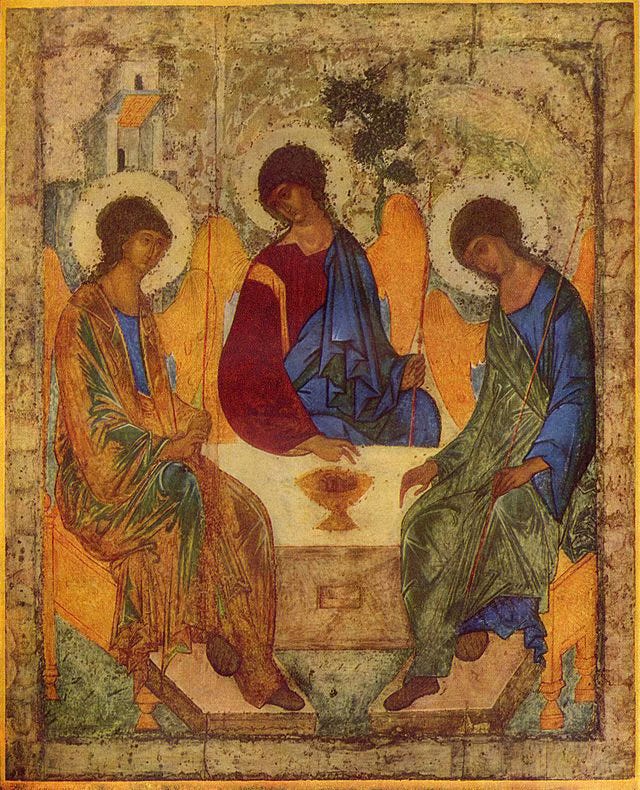The sky is glowing, cloudy undulations of pink and blue birthing the new morning. Sometimes I feel like a jarring note as I awake to the infancy of the day, my aging body at odds with the fresh promise of dawn, still heavy with dark dreams and slowly unbending creaking bones. Not this morning. I still creak and need to stretch muscles out of dormancy, but my body is not all of who I am, and my spirit rises hopefully to greet this day. I know this feeling will not last as my body, mind, and spirit take turns leading my life’s dance, at times forgetting to include the others in this performance, forgetting for Whom they dance. This can be awkward, especially when one of them trips, or even falls. The audience of One-in-Three smiles at these mishaps, offers help to rise, even instructs: Watch Me, They say. Slowly I learn, they learn to dance together, these parts of me that are Me. It gets easier, especially when I remember to breathe in deeply, filling my being with life-giving abundance that blows away the dusty accumulations of doubt. I can do this. I want to do this. I am doing this! Funny how this aging body grows more graceful, imperceptibly but undoubtedly, looking back over the years of painful practice, blisters and bruises and even scars. There is comfort in this vantage point., vistas now visible. It’s true: His mercies are new every morning.
Perichoresis is the word some theologians have used to metaphor the Trinity in a kind of “divine dance,” perfectly choreographed and inviting us to imitate and even join in joyful unity with the triune God. I have used it in this way, especially after reading what seemed a helpful explanation of this concept applied to marriage in one of my favorite books on sexuality.1 As lovely as this picture is, it is inadequate to describe the mystery of the unity and individuality of the Persons of God, and like most metaphors we attempt to understand God, limited and to be used with care, if at all. Many heresies have arisen out of misguided attempts to wrangle the Trinity into our finite human understanding2 It is still a mystery.
Professor Richard Steele explains more here. I love his kind explanation (even as he takes beloved Eugene Peterson to task for falling into this understandable error), sharing another picture of eucharistic union in the theophanic visitors to Abraham and Sarah in Genesis 18.
This icon was created in the aftermath of a compounding of peri and chōreō into perichōrēsis by Byzantine scholars, with the original meaning of “circular rotation, a mutual giving-way, an interchange, an interpenetration” even later being translated into the concept of a dance, as the change in vowels ends up with similarity to chŏrŏs, meaning “dance, choir, chorus.” Oops. But this rendering by Rublev better retains the meaning of mutuality and “interpenetration.” Steele says:
He depicts the haloed faces of the three angels identically – for they all equally share the divine nature. He has their wings touch and overlap, but keeps their bodies separate – to signify both the distinctness of their respective identities and the unity of their fellowship. He shows their heads bowed reverently toward each other – for each demonstrates his distinctive personhood by honoring the other two. He gives the figure to the left a shimmering golden robe, representing the Father’s supreme authority; he clothes the figure in the middle in a brown robe, signifying the Son’s earthly humility; and he shows the figure to the right in a green robe, symbolizing the Spirit’s office as “the Lord, the giver of Life.” In this great icon, the color palette, the composition of the scene, and the facial expressions, bodily postures, hand gestures and costuming of the figures are all meant to express the threeness of the Divine One, and the oneness of the Holy Three. They dine eucharistically in a perfect fellowship of eternal, reciprocal love. But they are not dancing.
I have used the metaphor of dancing to explain my own awkward attempts to live as a fully integrated person. God metaphors Himself as a gift to us finite beings, for who can otherwise begin to understand his incomprehensibility unless he kindly kneels down beside us and gently explains Himself through these simple things–trees, vines, birds, rocks, light, bread, wine, mothers and fathers? The poetry of God is all around us, and childlike, I imitate Him, learning and growing–and dancing more freely–as I do.
Authentic Human Sexuality: An Integrated Christian Approach, by Jack and Judith Balswick (2008). This is still a great book, especially its application of David Schnarch’s concept of differentiation as necessary for healthy relationships.







